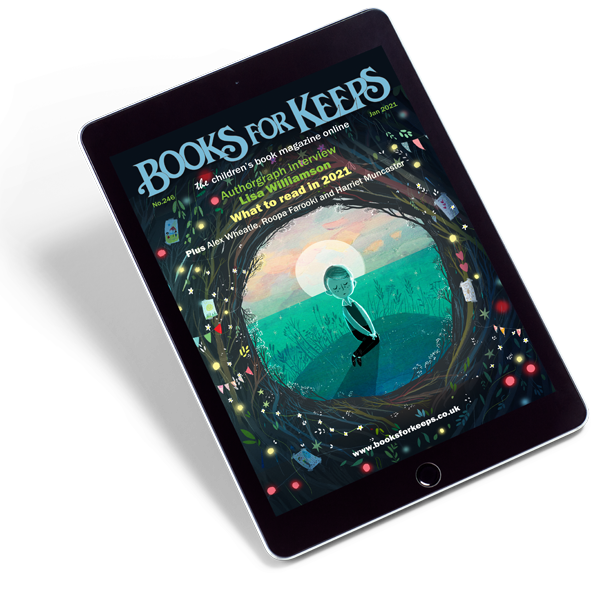
Get App-y in 2021
Life-long bibliophile Clare Zinkin takes a deep breath and investigates reading apps.
I’ve always been a purist, preferring to read in print rather than on screen, but in 2020, with lockdown and a lack of access to physical books, online books began to figure large in quite a few Generation Alpha households. It was around this time I was approached by a Danish company called Maneno, who are launching their reading app in the UK. They wanted to understand the UK children’s publishing market, but also to reach beyond the learning to read agenda. They wanted to focus on reading for pleasure. To borrow a phrase from the Open University Research Rich Pedagogies website, to ensure that the will influences the skill and vice versa.
So how to ensure that a reading app isn’t just a homework chore? How to evaluate whether children are enjoying reading? The first principle must be choice and accessibility of content. Initially, Maneno worked with Badger Learning and contacted publishers including Sweet Cherry and Arcturus, but the forward focus is on getting as much content as possible. This isn’t without obstacles though, as Thomas Normann-Ekegren, one of Maneno’s founders, explains:
‘We do meet some of the same challenges that we met in Denmark three years ago, where publishers in their contracts had not secured streaming rights – which allows them to offer books through our platform.’
But another principle behind reading for pleasure pedagogy is proving a little easier: the social element. With lockdown, bookclubs and booktalk were happening virtually, a concept Maneno had already considered. Children are actively encouraged to form networks of friends on the app, sharing their excitement about books. They can recommend books to each other and read together online in what Maneno calls buddy-reading, taking turns reading or doing challenges while they read, as Normann-Ekegren explains: ‘We see huge potential in making reading a social experience. Reading on digital devices is not the number one choice at the moment, but we strongly believe that this is changing in the future. Reading on a device allows for the easy consumption of books and audiobooks, and it allows us to re-think reading for new generations. With the introduction of our buddy reading feature – children can read a book together online remotely and help each other to read challenging books or simply to enjoy a story together. We actually see that those who engage with our buddy-reading read many more books compared to those who don’t. On average, we see children reading 55-60 books each year using Maneno.’
Listening to audio, and reading books aloud is key to reading for pleasure. Children can share recordings with friends and parents, but also listen back to their own fluency and pronunciation, or read in funny voices. (Of course, all this is only possible if the publisher has granted permission to enable this feature for the specific book).
Maneno are also working on in-app features including children creating their own reading collections/lists and sharing with friends, as well as sharing writing they have done in response to their reading. They will also be able to create and share their own book quizzes.
Aiming for the children to gain a greater understanding of the texts was something I was keen to promote, and Maneno are working on a range of analyses that the children can delve into, from an emoji led review to in-depth reviews, storyboarding, and character analysis, and key to this is that they can also share them all with friends, hopefully gaining an appreciation of intertextuality.
Of course, Maneno want children to have fun. Engagement and response are key, and so the app uses gamification. Children’s reading achievements are mapped – they earn points and transfer them into items for their own avatar dragon: children can express their personality and interests through the dragon’s appearance, and current users show great interest in exploring each other’s dragons.
Reading for pleasure has to be child directed, and with the ability to choose what to read, when to read and how much to read, there is plenty of child ownership within the app. Parents can monitor their child’s levels, progress, reading plans and achievements.
There are other reading apps on the market, with different content and features: Epic, Mee Genius, SNAP, Reading Rainbow, Starfall Learn 2 Read, Reading Magic as well as those that offer reading scheme school tie-ins, such as Bug Club, Reading Eggs and more. The Reading Realm features ways to entice reading and check comprehension of texts, from a school-based approach such as filling in missing words, to more discussion based, probing opinions and likes and dislikes. It offers just extracts though, publishers hoping that reading of the extracts will lead to out-of-app book purchases.
So, following my limited consultancy at Maneno, was this purist swayed? As a reading consultant, I have to be realistic. Not every child has a home environment that can facilitate the reading for pleasure vibe, whether it’s lack of access to print books, lack of time etc. And also, it’s important that we accept the digital expectations and needs of Generation Alpha. Research shows that they are tech-immersed, love gamification and activity-focussed brands.
I still believe the best we can do for our children is to physically sit with them and read them a printed book, and give them access and choice of printed books for independent reading. But as a viable alternative when that isn’t possible, could an app make some children readers for life? Yes, I think maybe it could.
Clare Zinkin is a children’s book consultant, writer and editor.





